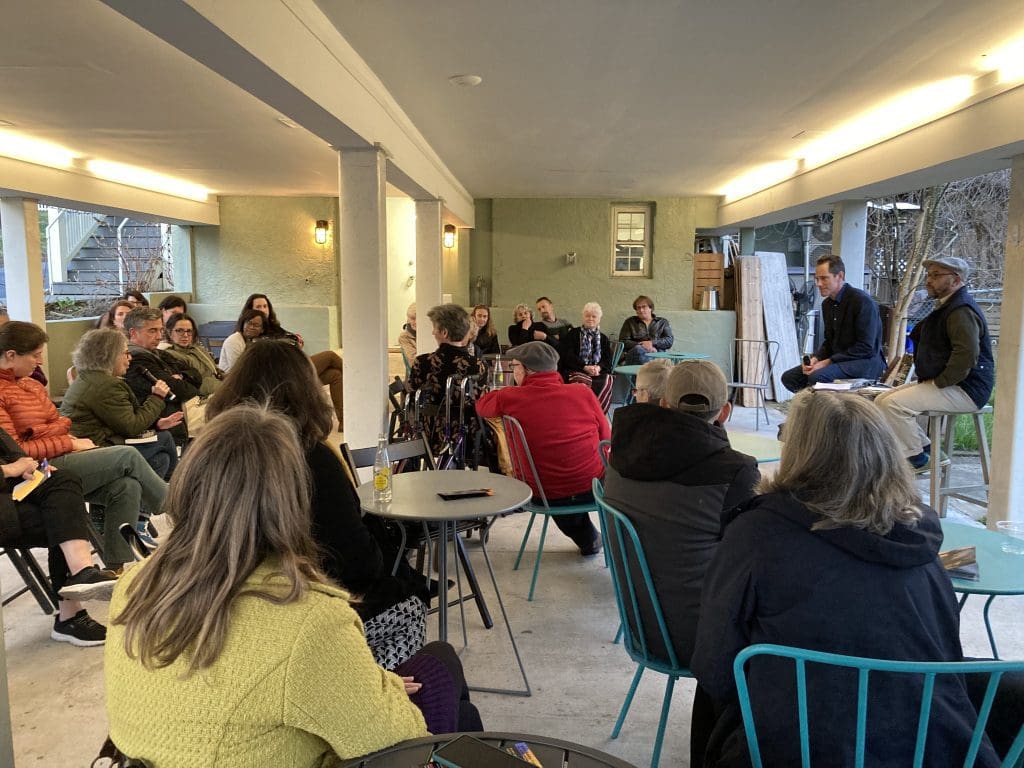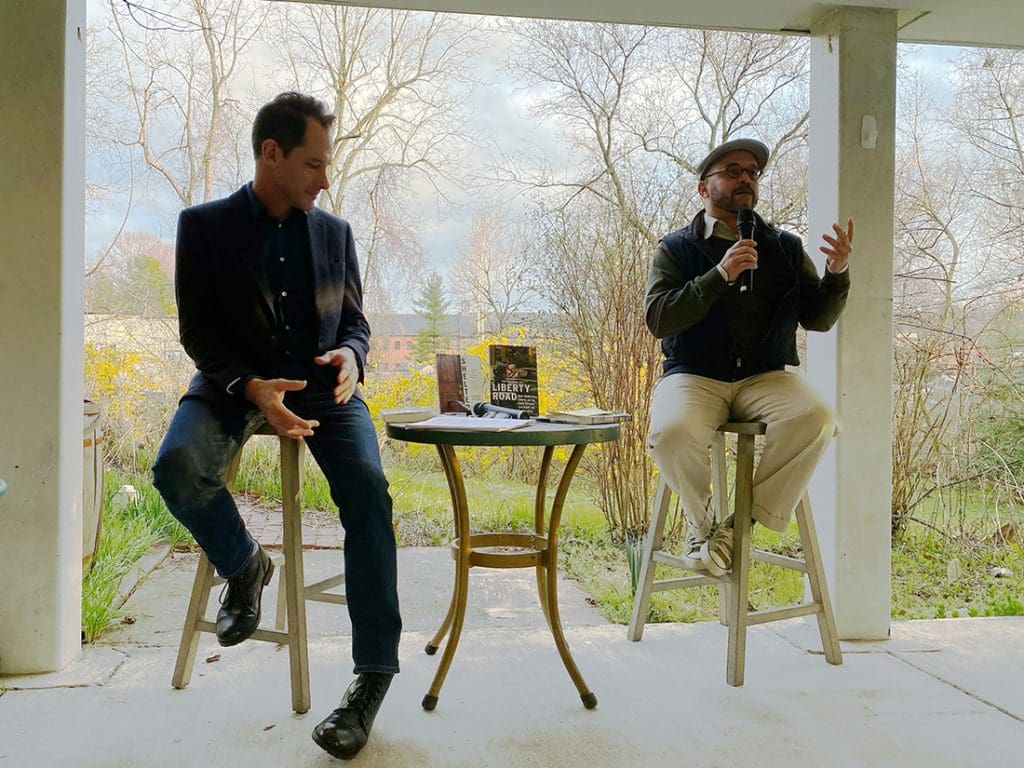Celebrating the arrival of spring to Baltimore, AGHI and the Ivy Bookshop welcomed two scholars on Baltimore history Monday evening: Professor Gregory Smithsimon (CUNY Brooklyn) and JHU’s own Prof. Lawrence Jackson. This month’s Humanities in the Village conversation began by tracing the personal and social geography which opens Smithsimon’s new book, Liberty Road: Black Middle-Class Suburbs and the Battle Between Civil Rights and Neoliberalism (NYU Press 2022). In discussing their shared and divergent points of reference, Profs. Smithsimon and Jackson then delved into the reasons why the urban/suburban split—segregating in law and in practice parcels of Baltimore City from the County and from adjacent counties to the north—is so representative and yet, paradoxically, peculiar and unique.
Sitting on the Ivy’s back patio not too far from the Liberty Road corridor which lends its name and history to the book, both speakers and local audience members chatted about the easy-to-miss struggles by national Civil Rights activists and local community members to push against the all-white neighbor regulations which hyper-segregated Baltimore well into the twentieth century.
Prof. Jackson pointed to a few recurring terms that structured Smithsimon’s analysis: the “neoliberalism” and “post-liberalism” of his title, and a term borrowed from evolutionary biology (“punctuated equilibrium”) to account for long periods where integrated communities and even single streets existed in relative peace, until struck by one form or another of crisis—be it a housing crash, a local tragedy, or legislative rollback. Finally, Smithsimon addressed the idea (popular in French history and sociology) of the “right to the city” (or droit de cité, itself a holdover from Roman law): this idea addresses the idea that every citizen in a democratic community has an equal right to that community’s public spaces and services—its roads, its parks, its buses, its water, etc. In places like suburban (and urban) Baltimore, where histories of racism and segregation continued to bar Black citizens from entering into certain spaces, buying certain homes or getting mortgages, or even from feeling safe driving down certain streets? That, Smithsimon points out, is a failure of the community to grant those people their due right to the city. And until we focus on building true cities, suburbs, and beyond where that right to the city is truly respected and upheld, civil rights progress will continue to struggle under that weight.
Check out Liberty Road and Jackson’s Shelter: A Black Tale of Homeland, Baltimore (Graywolf 2022). And join us on the last Monday in April for our next Humanities in the Village event—also on the Ivy’s lovely outdoor patio!


